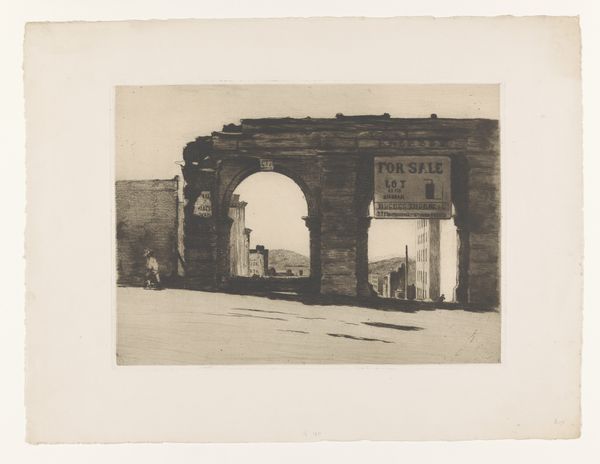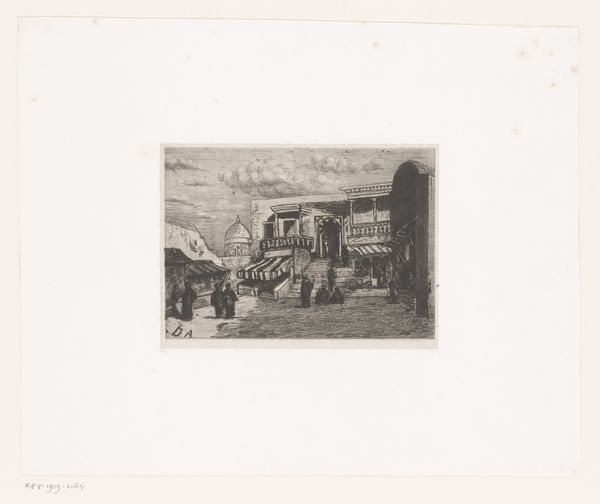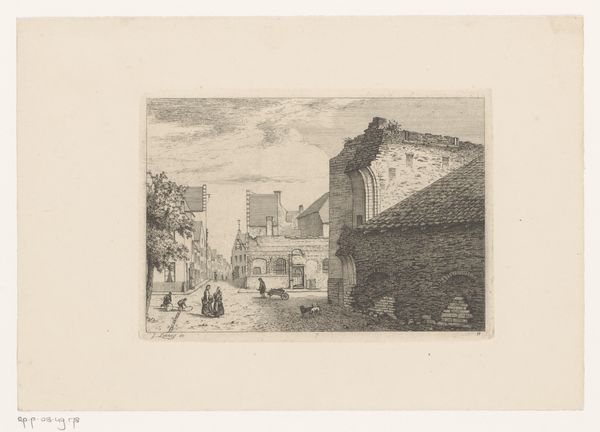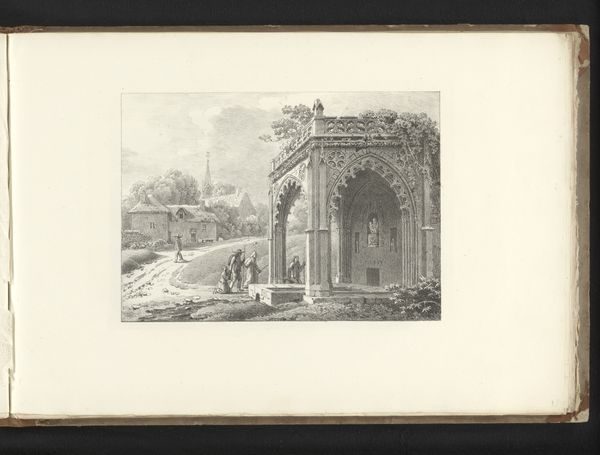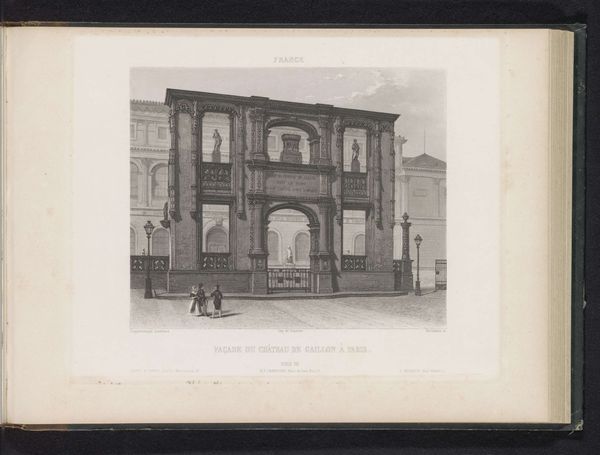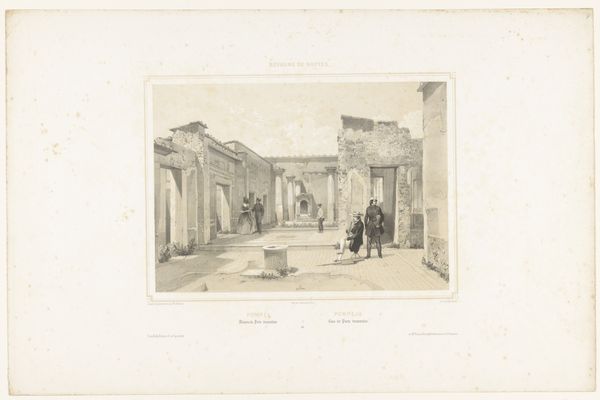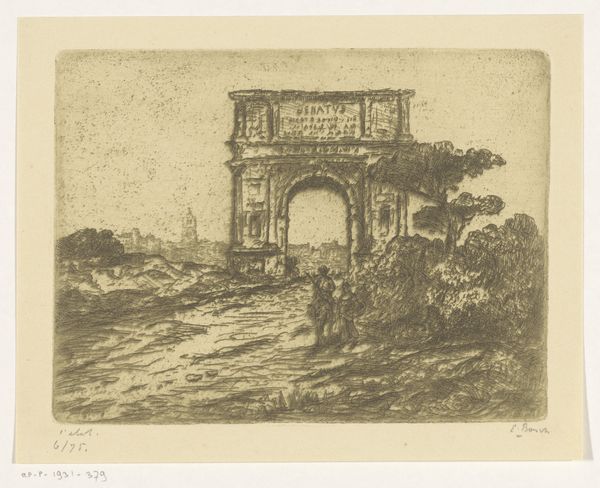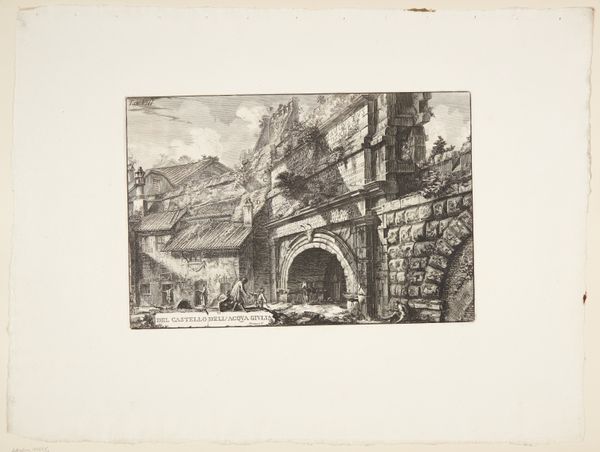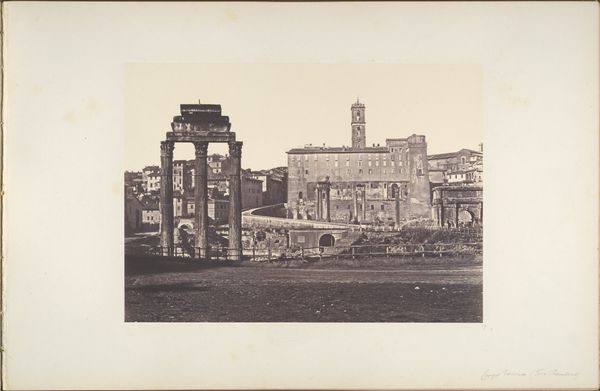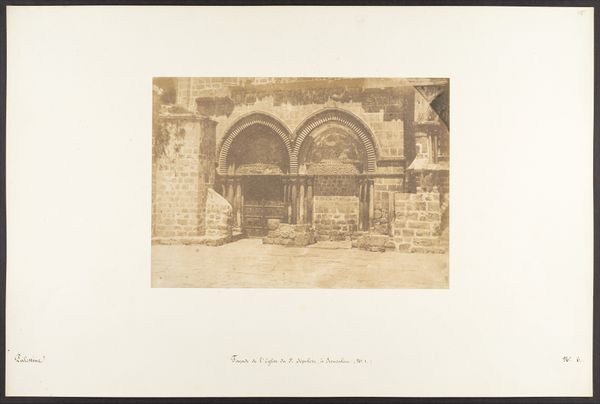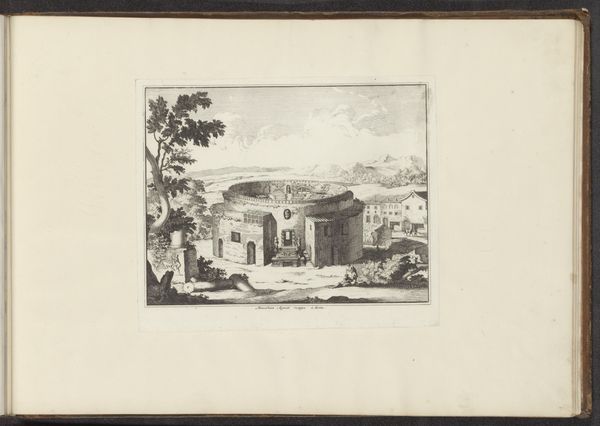
print, etching
# print
#
etching
#
landscape
#
etching
#
charcoal drawing
#
pencil drawing
#
cityscape
#
realism
Dimensions: height 350 mm, width 477 mm
Copyright: Rijks Museum: Open Domain
Curator: Here we have Willem Witsen's etching, "View of a Ruin in San Francisco," likely created between 1915 and 1919. Editor: It has such a melancholic quality to it, doesn't it? The decay of the architecture contrasted with the nascent skyscrapers in the distance creates an almost post-apocalyptic atmosphere. Curator: Yes, and note the interplay of textures achieved through the etching process. See how Witsen varies the line work to suggest both the rough texture of the aged stone and the smoother surfaces of newer buildings. We must think of the labor involved, the choices in biting the plate and pulling each impression. Editor: Absolutely, and that's precisely what lends this work its visual interest. The composition itself is fascinating. The artist's focus is obviously the architectural ruin. Note how Witsen used this dilapidated arch as a framing device, almost inviting our gaze to explore the city in its periphery, guiding the eye toward these new structures which speak to the rise of industry and urbanization after a time of decay. Curator: What I find intriguing is the "For Sale" sign affixed to the ruin. It speaks volumes about land usage, property value, and the commodification of even historical remnants during this period. The very means of distribution, these prints, would have been purveyed through the booming commercial markets in burgeoning urban centers. Editor: Yes, I also find this intriguing as the presence of that sign, a contemporary advertisement, serves as an intrusion into the romantic ruin. It shatters any illusions of timelessness we might project onto it. Curator: And do consider the urban experience embodied through the sale of these etchings. For whom were these affordable depictions intended? Likely for urban middle-class folks or maybe wealthy investors. We see how the image’s existence participates in a network of social and financial power relations. Editor: So true. Looking again, you’ve also made me more sensitive to the spatial relationship. The composition seems very self-aware; it doesn’t just represent the location but comments on change. It seems to suggest the present consumes the past without remorse. A fitting scene to take in here at the Rijksmuseum! Curator: Precisely! The convergence of artistic skill and the tangible forces shaping society is fascinating to observe and share.
Comments
No comments
Be the first to comment and join the conversation on the ultimate creative platform.
